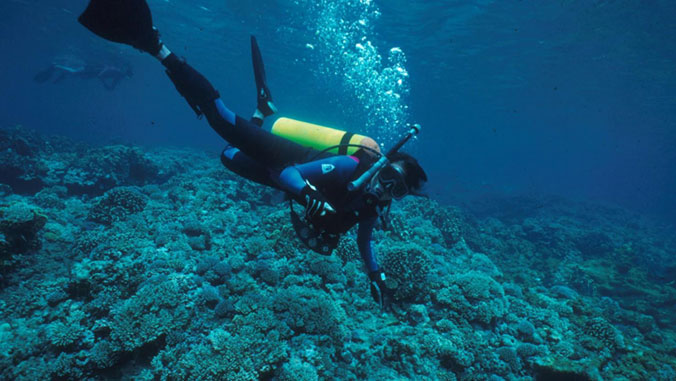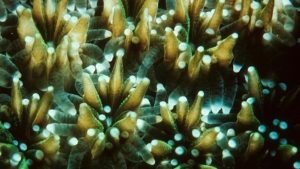
Coral reefs could be almost extinct in 30 to 50 years, under the worst-case scenario, according to an international group of scientific experts, including University of Hawaiʻi at Mānoa research professor Robert H. Richmond, who identified and discussed the requirements for coral reef survival in an article in Biological Conservation.
More than 500 million people rely on coral reefs for the protection they confer against coastal damage from waves, the fisheries resources they offer, the cultural practices they support and the tourism they help attract. Yet these ecosystems are among the most threatened by global climate change. Since the 1980s, there has been a rise in the number of mass bleaching episodes, during which corals expel the microscopic algae that keep them alive.
While affected corals may recover if a period of raised temperature is brief, prolonged elevated temperature exposure can kill corals and the ecosystems they support. Many affected coral reefs that exhibited 70–80% live coral cover in the 1970s, presently exhibit less than 5–10%.

Simulating future changes
The team of scientists, co-directed by Joanie Kleypas, a scientist at the U.S. National Center for Atmospheric Research, and oceanographer Jean-Pierre Gattuso of the National Center for Scientific Research (France) and comprised of members of the Pew Marine Fellows Program and the Ocean Solutions Initiative, modelled future reef changes for two CO2 emission scenarios: the worst case and a scenario acceptable under the Paris Agreement. The former would lead to near extinction of reefs in 30 to 50 years, while the latter would give some corals time to adapt.
Of the 16 possible actions for limiting the decline of coral reefs presented in the scientific literature, a massive energy transition away from greenhouse gas-emitting, petroleum-based fuels is the most effective and the only plausible one on the global scale. Actions that may be taken on regional and local levels—for example, integrated land-use practices, pollution abatement, the designation of marine protected areas and reef restoration efforts using selected genotypes or species best suited to new environmental conditions—may increase the adaptation potential of corals and the persistence of coral reefs.
Window of opportunity
“Coral reefs worldwide are threatened but not doomed. We have a window of opportunity to act to protect these precious and amazing ecosystems, and the ultimate outcome is entirely up to us,” said Richmond, who is also the director of the Kewalo Marine Laboratory at UH Mānoa’s School of Ocean and Earth Science and Technology.
The group asserts that saving reefs requires worldwide political support, similar to campaigns against public health crises.
This effort is an example of UH Mānoa’s goal of Excellence in Research: Advancing the Research and Creative Work Enterprise and (PDF) and UH Mānoa’s goal of Building a Sustainable and Resilient Campus Environment: Within the Global Sustainability and Climate Resilience Movement (PDF), two of four goals identified in the 2015–25 Strategic Plan (PDF), updated in December 2020.

